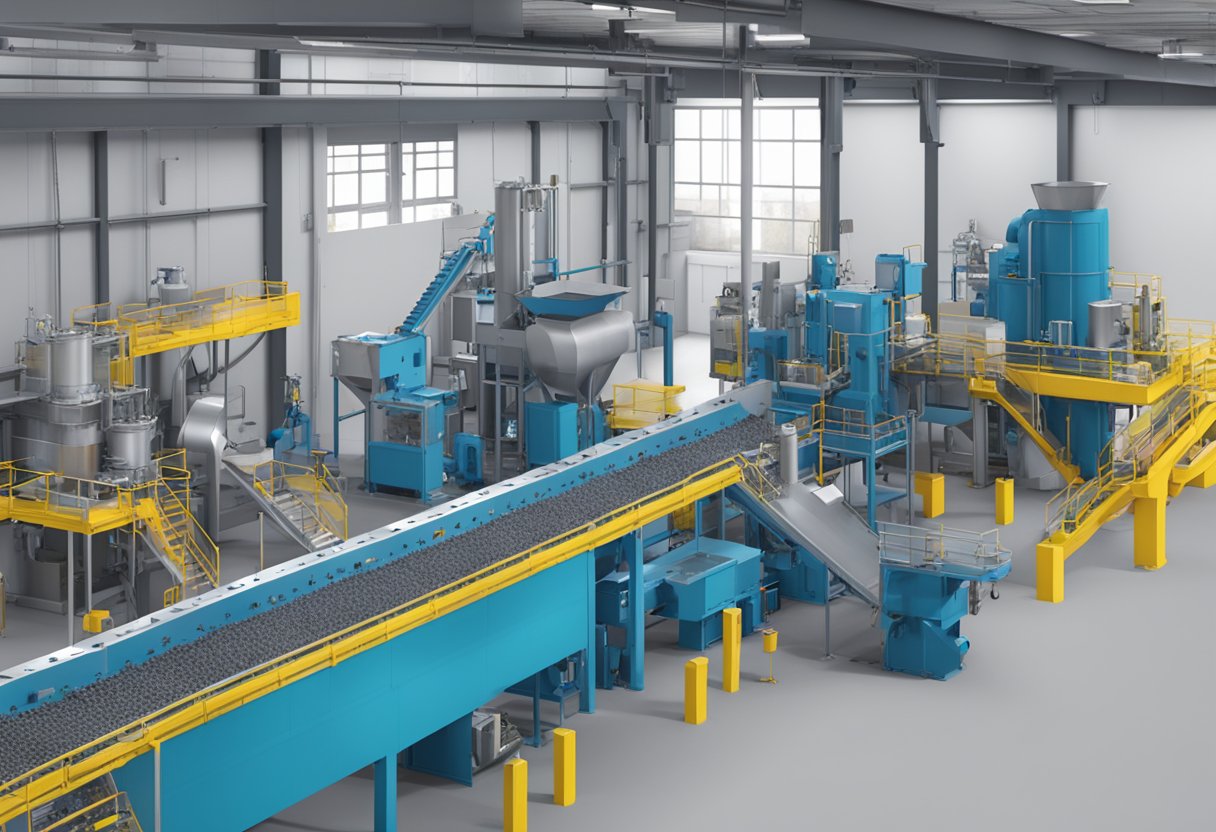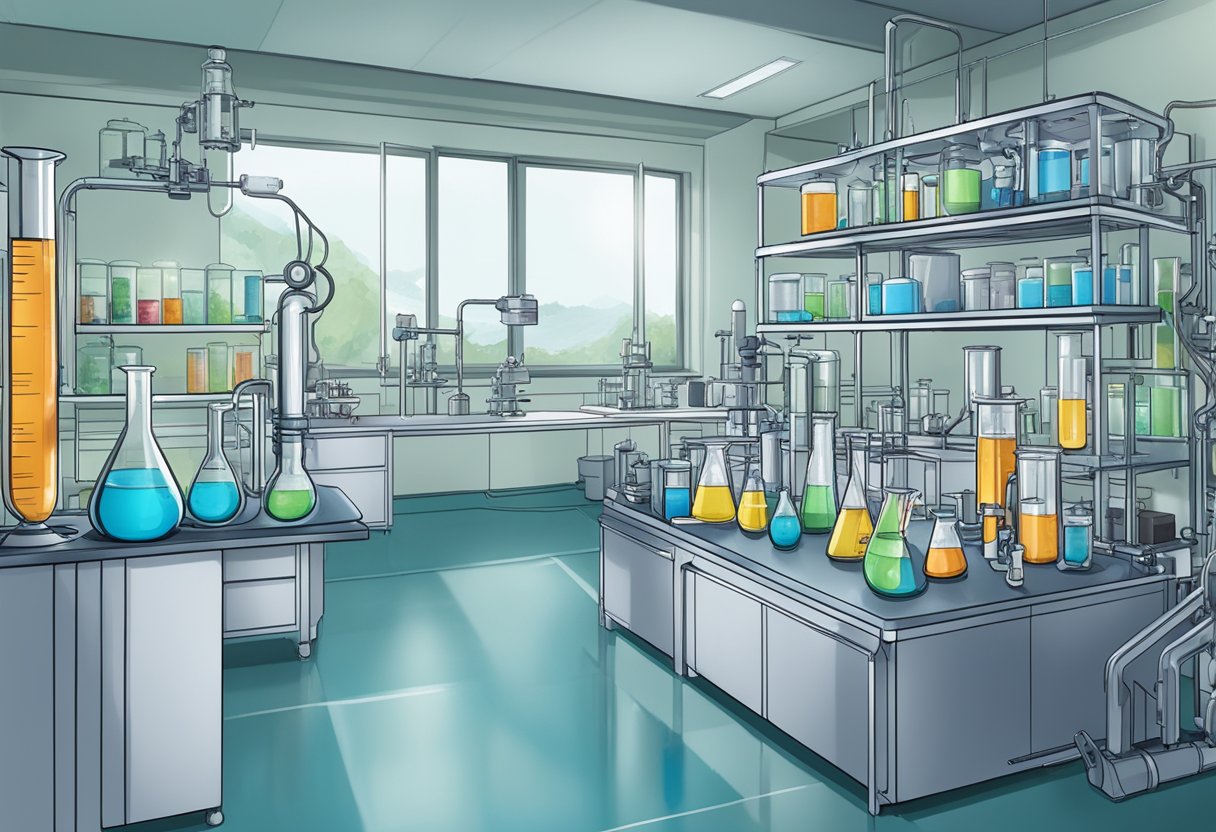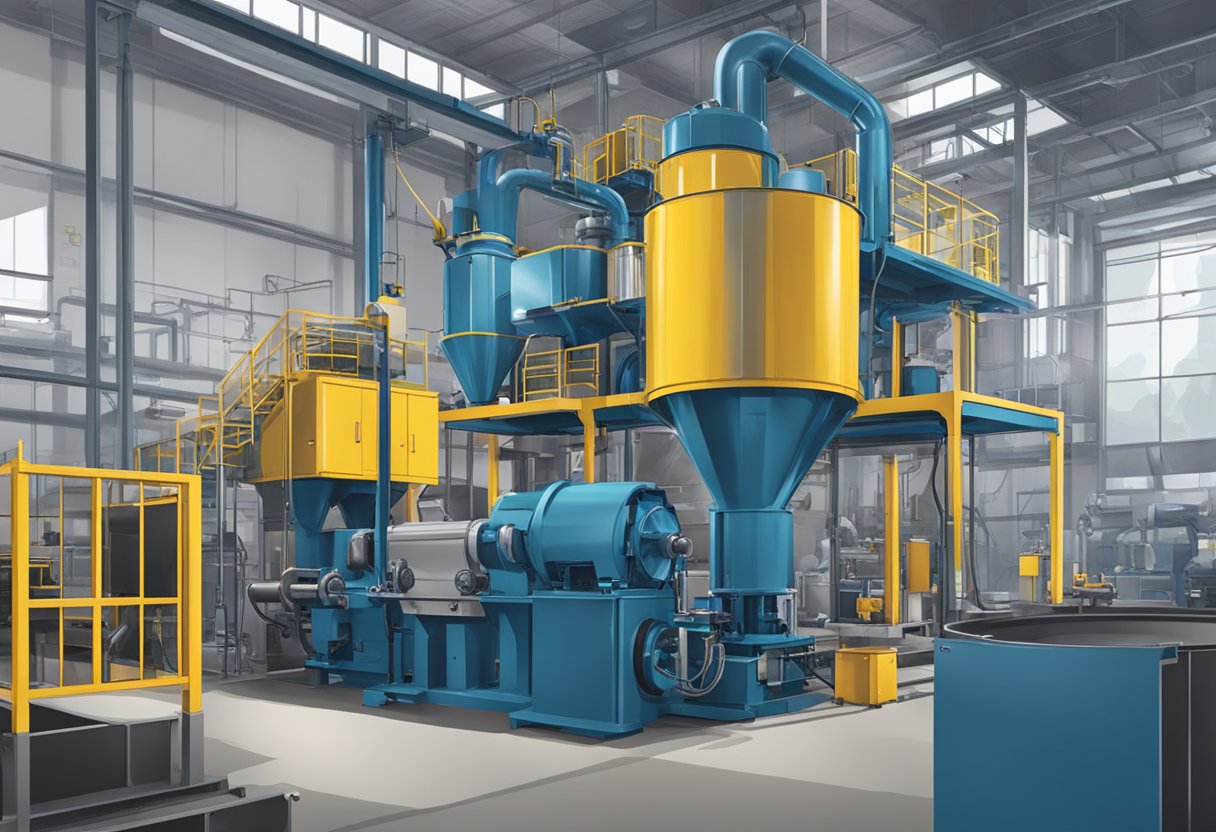IPPD Rubber: Properties, Uses, and Benefits
19/01/2024
IPPD rubber, also known as N-isopropyl-N’-phenyl-p-phenylenediamine, is a type of synthetic rubber additive that has become increasingly popular in recent years. This rubber additive is commonly used in the production of tires, belts, hoses, and other rubber products. It is known for its excellent anti-oxidation properties, which help to extend the lifespan of rubber products.

One of the main benefits of IPPD rubber is that it helps to prevent the degradation of rubber due to exposure to heat, oxygen, and other environmental factors. This is particularly important in the production of tires, where the rubber is constantly exposed to harsh conditions on the road. By adding IPPD rubber to the tire production process, manufacturers can help to ensure that their tires last longer and perform better.
Another benefit of IPPD rubber is that it is relatively easy to process and can be added to rubber compounds in a variety of ways. This makes it a versatile additive that can be used in a wide range of rubber products. As a result, it has become a popular choice among rubber manufacturers who are looking for ways to improve the performance and durability of their products.
IPPD Rubber Overview

IPPD rubber, also known as N-isopropyl-N’-phenyl-p-phenylenediamine, is a type of synthetic rubber antioxidant that is commonly used in the manufacturing of tires, belts, hoses, and other rubber products. It is a dark brown to violet, crystalline substance that is soluble in most organic solvents.
One of the main benefits of using IPPD rubber is its ability to protect rubber products from the harmful effects of heat, zinc oxygen, and ozone. This is due to its high thermal stability and antioxidant properties. It also helps to improve the durability and lifespan of rubber products, making them more resistant to cracking, tearing, and other forms of damage.
IPPD rubber is typically added to rubber compounds during the mixing stage, where it is dispersed evenly throughout the material. It is often used in combination with other antioxidants and stabilizers to provide a comprehensive protection package for rubber products.
In terms of safety, IPPD rubber is considered to be relatively non-toxic and non-irritating. However, as with any chemical substance, it should be handled with care and in accordance with appropriate safety guidelines.
Overall, IPPD rubber is a valuable ingredient in the manufacturing of high-quality rubber products that require superior protection against the effects of heat, oxygen, and ozone. Its antioxidant properties and thermal stability make it an essential component in many industrial applications.
Chemical Composition of IPPD Rubber

IPPD rubber is a type of synthetic rubber that is made from a blend of isobutylene and isoprene. It is a high-performance rubber that is known for its excellent resistance to heat, oxidation, and weathering. The chemical composition of IPPD rubber is responsible for its unique properties and characteristics.
Antioxidant Properties
One of the key properties of IPPD rubber is its antioxidant properties. IPPD rubber contains a high concentration of antioxidants, which help to protect the rubber from degradation caused by exposure to heat, oxygen, and other environmental factors. This makes IPPD rubber an ideal choice for applications that require high levels of durability and resistance to aging.
Molecular Structure
The molecular structure of IPPD rubber is another important factor that contributes to its unique properties. IPPD rubber is composed of long chains of isobutylene and isoprene molecules that are cross-linked to form a strong, flexible material. The cross-linking of the molecules gives IPPD rubber its high tensile strength and resistance to tearing and abrasion.
In addition to its unique chemical composition, IPPD rubber is also known for its excellent resistance to oils, fuels, and chemicals. This makes it an ideal choice for a wide range of industrial and automotive applications, including seals, gaskets, hoses, and other components that are exposed to harsh environments.
Overall, the chemical composition of IPPD rubber is what makes it such a high-performance material. Its unique properties and characteristics make it an ideal choice for a wide range of applications, and its durability and resistance to aging make it a cost-effective solution for many industrial and automotive applications.
Manufacturing Process

Raw Materials
The production of IPPD rubber involves the use of several raw materials, including isobutylene, para-phenylenediamine, and sulfur. Isobutylene is a gaseous hydrocarbon that is produced from the refining of crude oil. Para-phenylenediamine is a chemical compound that is synthesized from aniline and nitrobenzene. Sulfur is a non-metallic element that is obtained from natural sources, such as volcanoes and hot springs.
Production Techniques
The manufacturing process of IPPD rubber involves several steps. First, the raw materials are mixed together in a specific ratio and heated to a high temperature. This process is known as vulcanization and is used to cross-link the rubber molecules. The cross-linking process makes the rubber material more durable and resistant to wear and tear.
After the vulcanization process, the rubber material is cooled and then shaped into different forms, such as sheets, tubes, or molded parts. The shaping process is done using specialized equipment, such as extruders, molds, and presses. The final product is then inspected for quality and tested to ensure that it meets the required specifications.
Overall, the manufacturing process of IPPD rubber involves the use of advanced production techniques and high-quality raw materials to produce a durable and reliable material that is used in a wide range of applications, including automotive, aerospace, and industrial applications.
Applications of IPPD Rubber
Automotive Industry
IPPD rubber has a wide range of applications in the automotive industry. It is commonly used in the production of tires, where it serves as an antioxidant and antiozonant. IPPD rubber helps to prevent the rubber from cracking and deteriorating due to exposure to oxygen and ozone, which can lead to tire failure.
In addition to tires, IPPD rubber is also used in various other automotive components, such as hoses, belts, and seals. These components are exposed to high temperatures and other harsh conditions, and IPPD rubber helps to protect them from damage.
Industrial Products
IPPD rubber is also used in a variety of industrial products. It is commonly used in the production of conveyor belts, where it helps to improve the durability and lifespan of the belts. IPPD rubber is also used in the production of seals, gaskets, and other components that are exposed to harsh conditions.
In addition, IPPD rubber is used in the production of wire and cable coatings. It helps to protect the wire and cable from damage due to exposure to heat, moisture, and other environmental factors.
Overall, IPPD rubber is a versatile material that has a wide range of applications in various industries. Its ability to protect against damage due to environmental factors makes it an important component in many products.
Performance Characteristics
Temperature Resistance
IPPD rubber exhibits excellent temperature resistance, making it an ideal material for use in high-temperature environments. It has a high resistance to heat aging and is capable of withstanding continuous exposure to temperatures up to 150°C. This makes it suitable for use in applications such as automotive engines, where it is exposed to high temperatures for prolonged periods.
Durability
IPPD rubber is known for its exceptional durability and resistance to wear and tear. It has a high tensile strength and tear resistance, making it an ideal material for use in heavy-duty applications. It is also resistant to abrasion and can withstand exposure to harsh chemicals and oils. This makes it a popular choice for use in industrial machinery and equipment.
In addition to its temperature resistance and durability, IPPD rubber also exhibits good compression set resistance and low permeability to gases. It is also resistant to ozone and weathering, making it suitable for use in outdoor applications.
Overall, IPPD rubber is a high-performance material that offers excellent temperature resistance, durability, and resistance to wear and tear. Its unique properties make it a popular choice for use in a variety of applications, from automotive engines to industrial machinery.
Health and Safety Considerations
Exposure Risks
When working with ippd rubber, there are potential exposure risks that workers should be aware of. Ippd rubber can cause skin irritation and sensitization, so it is important to wear appropriate personal protective equipment (PPE) such as gloves, long-sleeved clothing, and safety glasses or goggles.
In addition, inhalation of ippd rubber dust or fumes can cause respiratory irritation or sensitization. Therefore, it is recommended to work in a well-ventilated area and wear a respirator if necessary.
Handling Guidelines
To minimize exposure risks, it is important to follow proper handling guidelines when working with ippd rubber. Workers should avoid direct skin contact with the material and wash their hands thoroughly after handling it.
It is also recommended to store ippd rubber in a cool, dry, and well-ventilated area away from sources of heat and ignition. In case of a spill or leak, workers should follow proper cleanup procedures and dispose of the material in accordance with local regulations.
By following these guidelines, workers can minimize their exposure to ippd rubbers and ensure a safe and healthy work environment.
Environmental Impact
Biodegradability
One of the key advantages of IPPD rubber is its biodegradability. Unlike traditional synthetic rubbers, IPPD rubbers can break down naturally over time, reducing its impact on the environment. This is due to the use of renewable raw materials in the production process, which are derived from natural sources such as plants.
Disposal and Recycling
IPPD rubbers can be disposed of in a number of ways, including landfill and incineration. However, these methods can have negative impacts on the environment, particularly if the rubber is not properly treated before disposal. As such, recycling is often the preferred option.
Recycling IPPD rubbers can be a complex process due to the variety of materials used in its production. However, advances in technology have made it increasingly possible to recycle IPPD rubbers, reducing waste and minimizing environmental impact.
Overall, IPPD rubbers offers a range of environmental benefits over traditional synthetic rubbers. Its biodegradability and recyclability make it a more sustainable choice for a range of applications.
Regulations and Standards
International Standards
IPPD rubber is regulated by various international standards that ensure its safety and quality. One of the most important standards is the ISO 9001:2015, which outlines the requirements for a quality management system. This standard ensures that the production process of IPPD rubbers is consistent and reliable, and that the final product meets the required specifications.
Another important international standard is the ASTM D2000, which sets the requirements for various rubber products, including IPPD rubbers. This standard specifies the material properties, such as hardness, tensile strength, and elongation, that IPPD rubbers must meet to be considered suitable for its intended use.
Compliance Requirements
In addition to international standards, IPPD rubbers must comply with various regulations and requirements set by different countries and regions. For example, in the United States, IPPD rubbers is regulated by the Environmental Protection Agency (EPA) under the Toxic Substances Control Act (TSCA). IPPD rubbers must be registered with the EPA and undergo a rigorous review process to ensure its safety for human health and the environment.
Similarly, in the European Union, IPPD rubbers is regulated by the Registration, Evaluation, Authorization, and Restriction of Chemicals (REACH) regulation. IPPD rubbers must be registered with the European Chemicals Agency (ECHA) and undergo a comprehensive evaluation to ensure its safety for human health and the environment.
Overall, the regulations and standards surrounding IPPD rubbers ensure that the material is produced and used in a safe and responsible manner. By complying with these requirements, manufacturers and users of IPPD rubbers can be confident in the quality and safety of their products.
Future Trends in IPPD Rubber Technology
IPPD rubber has been widely used in various industries due to its excellent properties such as high tensile strength, durability, and resistance to heat and chemicals. As technology advances, there are several future trends that are expected to shape the development of IPPD rubbers.
One of the most significant trends is the integration of nanotechnology in IPPD rubbers. Nanoparticles can improve the mechanical properties of the rubber and enhance its resistance to wear and tear. Additionally, the use of nanotechnology can also increase the lifespan of the rubber and reduce maintenance costs.
Another trend is the development of eco-friendly IPPD rubbers. With increasing concerns about the environment, manufacturers are exploring ways to reduce the environmental impact of their products. Eco-friendly IPPD rubbers can be produced using sustainable materials and manufacturing processes, reducing waste and pollution.
Furthermore, there is a growing demand for IPPD rubbers that can withstand extreme temperatures. This is particularly important in industries such as aerospace, where rubber components must perform in harsh environments. Manufacturers are developing new formulations of IPPD rubbers that can withstand temperatures as low as -60°C and as high as 250°C.
In conclusion, the future of rubber technology is promising, with advancements in nanotechnology, eco-friendly manufacturing, and extreme temperature resistance. As these trends continue to evolve, rubber will continue to be a valuable material in various industries.




